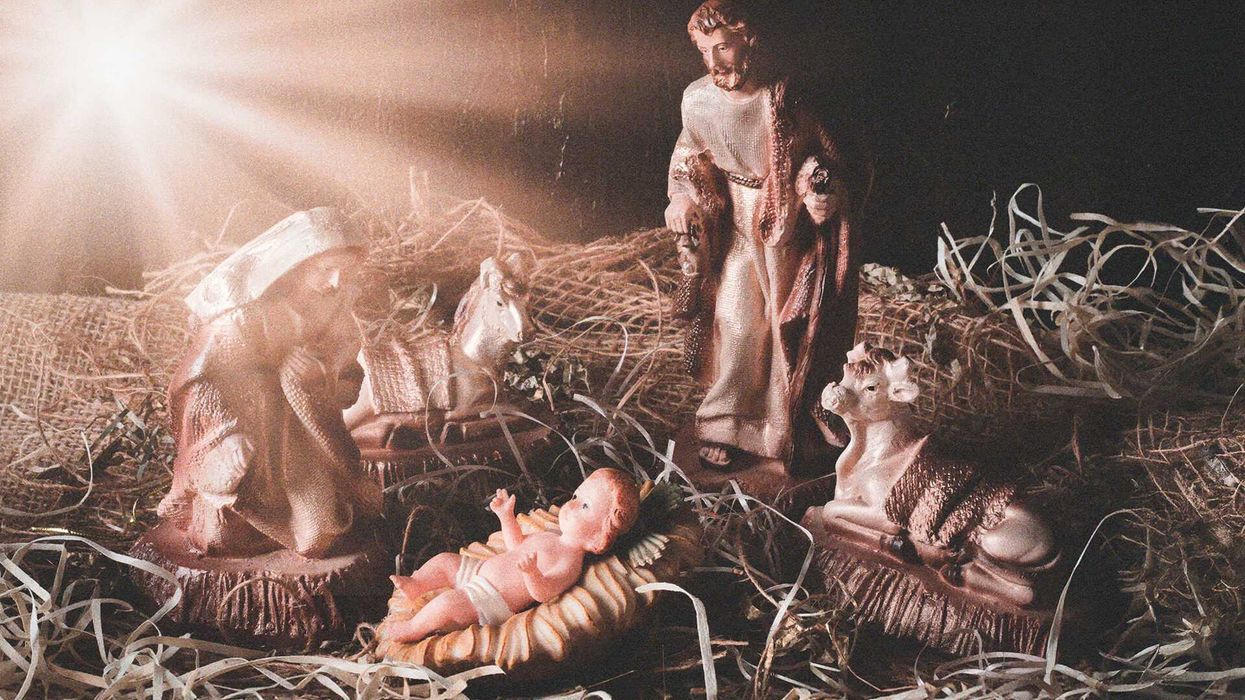
© 2025 Blaze Media LLC. All rights reserved.
To Find Their Father's Vanished WWII Sub, 3 Brothers Proved the Experts Wrong
August 18, 2012
To discover the USS Grunion, the World War II submarine that had vanished without a trace off remote Kiska Island in the Bering Sea on July 30, 1942, Bruce, Brad, and John Abele defied the odds and the experts. Oceanographers, professional wreck hunters, and other deep-sea experts believed the odds against the success of the expedition were astronomical. But to the Abele brothers, the search was personal: the sub’s skipper had been their father, Lieutenant Commander Mannert L. “Jim” Abele. Jim’s three sons wanted answers for themselves and for the families of Jim’s sixty-nine-man crew, a quest their mother, Kay Abele, had continued until her death in 1976. Her sons—unconventional, unorthodox, and innovative—picked up the search and gave a whole new meaning to thinking outside the box.
Bruce, Brad, and John, the cofounder of international medical giant Boston Scientific, met with Dr. Robert Ballard, discoverer of the Titanic in 2005. Ballard viewed a search as possible, but he was committed to another project in August of the next year, the only time the weather allowed a search off Kiska. With no sleek, state-of-the-art deep-sea research vessel available, the Abeles hired an old commercial fishing vessel, the Aquila, whose skipper, Kale Garcia, knew the brutal waters and elements off the remote Aleutian islands like the back of his proverbial hand, as a makeshift “research platform” for a sophisticated sonar search.
The Abeles gathered the key clues about where the sub had gone down in action not through conventional scientific methods, but via global internet contacts. Japanese scholar Yutaka Iwasaki e-mailed long-forgotten Japanese naval records and a chart that narrowed the search area off Kiska Island from impossible to a long shot.
In August 2006, the side-scan sonar team hired by the Abeles had several underwater “hits” – intriguing images of what looked like a sub at 3,000 feet below the surface of the Bering Sea. Although sonar-team leader Art Wright evinced “95 percent certainty” they had found the submarine, Ballard cautioned that “the target’s shadow . . . looks much more like a surface ship.” He cautioned, “Don’t let your desire for this to be the right target fool you.” Ballard suggested another sonar search, but the Abeles chose instead to send the Aquila back to Kiska in August 2007, with John Abele aboard, armed this time with an ROV (remote operated vehicle) to take actual photos and video of the wreck—if they could find it again in the brutal Bering Sea. David Gallo, an oceanographer and Ballard protégé who had joined John Abele aboard the ship, confessed that his colleagues at the Woods Hole Oceanographic Institute rated the chances of finding the sub at “zero.”
Other American World War II submarines—the Lagarto, the Wahoo, the Perch, and the Flier—have been discovered, but all were reachable by divers, at depths ranging from approximately 190 to 300 feet. A few weeks ago, the German U-boat 550 was discovered some 70 miles from Nantucket by sonar, and divers were able to reach her. Each of the expeditions to find those long-lost World War II wrecks posed difficulties and required courage on the part of the search teams. Even the discovery of the USS R-12 off Key West, Florida, however, using an underwater robot at some 600 feet down, pales in comparison with the difficulty and danger of locating the Grunion thousands of feet below the Bering Sea. Confronting the wild winds, waves, and deadly currents of the waters familiar to viewers of the hit cable series Deadliest Catch, fighting to avoid snagging and losing the costly sonar and ROV equipment on volcanic underwater crags and ridges, the Abeles’ two expeditions required unprecedented skill—and luck.
On August 22, 2007, the naysayers were conclusively proven wrong. With a storm bearing down on the Aquila,, the ROV began sending up video of the USS Grunion. Gallo later said, “If you were to pick a place to hide from a diving crew, the Grunion nearly had it.”
After sixty-five years, the Abeles had done what few scientists, divers, and wreck hunters believed was possible. The brothers had not done it for monetary gain or fame. They had been driven by a desire and determination to find their father’s and his crew’s missing submarine. John Abele said, “Fifty million people died in World War II. Good people on both sides. This was our way of remembering them.”
Peter F. Stevens author of Fatal Dive: Solving the World War II Mystery of the USS Grunion
Want to leave a tip?
We answer to you. Help keep our content free of advertisers and big tech censorship by leaving a tip today.
Want to join the conversation?
Already a subscriber?
more stories
Sign up for the Blaze newsletter
By signing up, you agree to our Privacy Policy and Terms of Use, and agree to receive content that may sometimes include advertisements. You may opt out at any time.
Related Content
© 2025 Blaze Media LLC. All rights reserved.
Get the stories that matter most delivered directly to your inbox.
By signing up, you agree to our Privacy Policy and Terms of Use, and agree to receive content that may sometimes include advertisements. You may opt out at any time.






